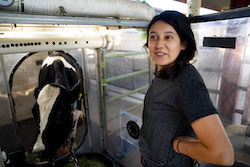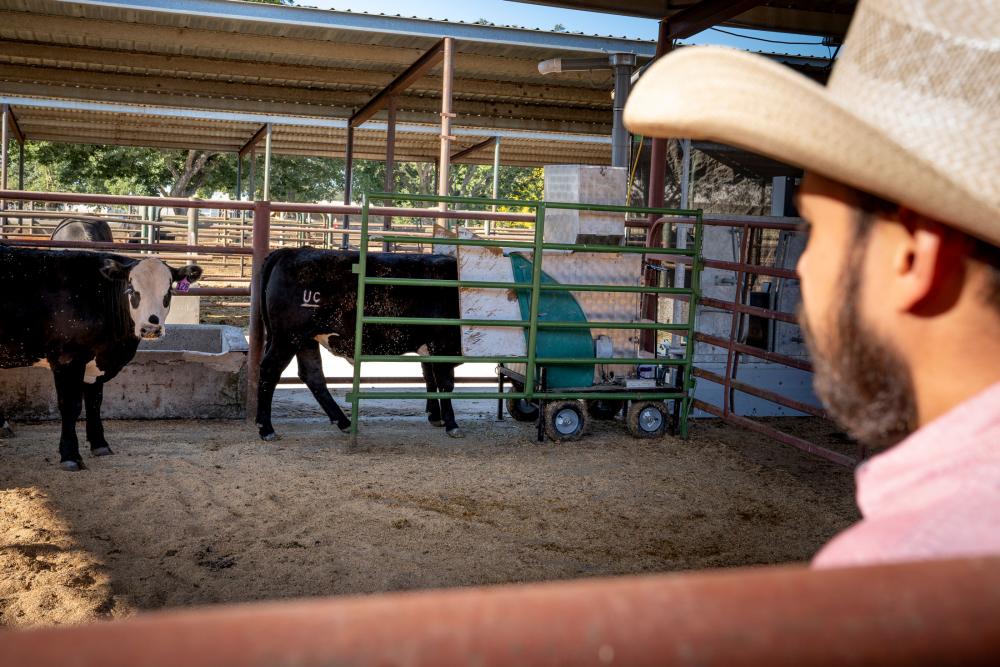
Is GWP* really 'fuzzy math?' You decide.
Has the beef industry landed on a metric that finally gives it a rosy glow? Is a new system of measurement absolving the sector from much of the global warming blame it’s been shouldering? And if so, is it all too good to be true?
According to a recent article in Bloomberg Green, the author contends that GWP star (GWP*), which some would argue is an improved way to measure the warming effect of greenhouse gases, is a sweetheart deal for methane-producing sectors such as animal agriculture. In fact, beef and dairy might even be dipping a hoof in conspiracy waters with the metric that comes to us from University of Oxford.
If you’re reading this, you likely know the conversation around cows and climate is a contentious one. It’s often charged and emotional, and expectedly so. That’s what happens when discussions touch on things that are highly personal and steeped in tradition. From our culture to our rituals to our upbringing to our health, food is so much more than nourishment. It also plays a role in our environment, and if we’re talking about red meat, this is where the argument typically begins.
I’ve dedicated my professional life to reducing the environmental impact of animal agriculture. Though I’m not a climate scientist, a large portion of my work focuses on quantifying greenhouse gases from cattle and other livestock, which is why my Twitter handle is @GHGGuru and not @ClimateGuru (who happens to be a lawyer for the National Wildlife Federation – go figure). Throughout the year, you can find me on farms or in one of our facilities at UC Davis, overseeing the measurement of greenhouse gas emissions from cattle.

Agolin feed additive study
Study from Dr. Frank Mitloehner's UC Davis lab studies methane-reducing feed additive in dairy cows
The information we gather in the lab and on ranches is critical in determining how livestock warms our climate. Another important piece of the puzzle is a metric to help us determine how much warming is caused by the emissions we measure. I’ve long been an advocate of GWP* as a metric that properly accounts for methane’s impact on global temperatures.
The old standby metric is GWP100. It served its purpose for a long time, but I concur with scientists who maintain it always fell short of assessing methane. That’s because methane is not simply a stronger version of carbon dioxide, as GWP100 suggests. It’s an altogether separate animal, and it behaves differently in the atmosphere.
I’ve said it before, and I’ll keep saying it: Methane is a powerful greenhouse gas that we need to reduce. If methane emissions go up, then temperature goes up four to five times more than what is estimated by the GWP100. If emissions are near stable over 10 years, temperature will also be stable. That’s due to the fact that after a decade, methane is destroyed in the atmosphere via hydroxyl oxidation (a term I apparently relish). If methane emissions decrease significantly, we’ll see cooling, as yesterday’s higher emissions are destroyed and not entirely replaced.
This was all noted in the recent IPCC AR6 Climate Change 2021: The Physical Science Basis report in chapter 7.

The recent Bloomberg article calls GWP* “fuzzy methane math,” claiming the beef sector has latched onto it to reduce the appearance of its impact on the environment. At the same time, the article explains why looking at a metric other than GWP100 may be an idea worth entertaining:
Because of carbon dioxide’s long life, every ton emitted increases the amount of the gas accumulating in the atmosphere. During 2020, when much of the globe was in lockdown, emissions fell, yet concentrations of CO2 increased. Since methane breaks down more quickly, it doesn’t accumulate in the same way. It takes only a modest cut in methane emissions for its atmospheric concentration to shrink—and warming to subside. This key difference is missed by today’s climate accounting.
At the risk of stating the obvious, reducing methane is an advantageous and necessary step to take in the fight against global warming and climate change. However, the effects of doing so aren’t accurately measured with GWP100. So, at a time when it’s never been more important to reduce our greenhouse gas emissions, we’re somewhat at a loss to say if we’re making a difference and how much of a difference we’re making.
I recently published a white paper with Dr. Sara Place, chief sustainability officer at Elanco Animal Health, in which we point out that both dairy and beef need to reduce methane by 18% to 32%, along with reducing carbon dioxide and nitrous oxide emissions substantially to reach the point where the sector no longer contributes warming to the atmosphere. That’s not creative accounting; it’s a lot of hard work for the sector. And it doesn’t end with climate neutrality (zero warming). That is, when producers reach that milestone, they can begin eating into their historic warming by further reducing emissions. Incidentally, for industries such as transportation that are heavy burners of fossil fuels, carbon neutrality is the best we can hope for. The opportunity to do more through methane reduction is real and achievable, though it won’t be easy.

Joe Proudman / CLEAR Center
We’re able to chart a path to climate neutrality for animal agriculture using GWP*, a metric that is fit for purpose. And we can get there while still feeding a growing population.
That isn’t to say the new metric is the be-all and end-all. As the Bloomberg article points out, GWP* has a built-in bias toward any level producer, even if that production is huge. The issue of fairness is one that needs to be addressed. The beauty of science is our ability to continually build on and improve discoveries.
In the meantime, the science and physics of methane aren’t going to change, and we can’t afford to wait to make reductions in our emissions while we debate the fairness of GWP*.
For the sake of our planet, resist the urge to jump on the cancel-culture bandwagon, and give animal agriculture the room it needs to make a difference.
Extra thoughts
Dr. Dave Frame, director of the New Zealand Climate Change Research Institute and Intergovernmental Panel on Climate Change author, brought up a good point on Twitter (and another here) about the fairness of using GWP*, mentioned in the Bloomberg article. He expanded on his point here:
GWP* rewards level production if you start counting the emissions from when it was level, but not if you start the analysis earlier. Also, there's often an assumption that GWP* must be the only signal in the policy, and I don't think that's a given. You could charge a small charge for emissions (corresponding to on-going warming from those emissions), and levy a large charge for failing to meet emissions reductions targets. That way you'd have a rising floor and sinking ceiling, and because there would be a price on emissions (and not just on the rate of change of emissions), it wouldn't be giving anyone a free pass.
- Dr. Dave Frame, @ClimateFramo
